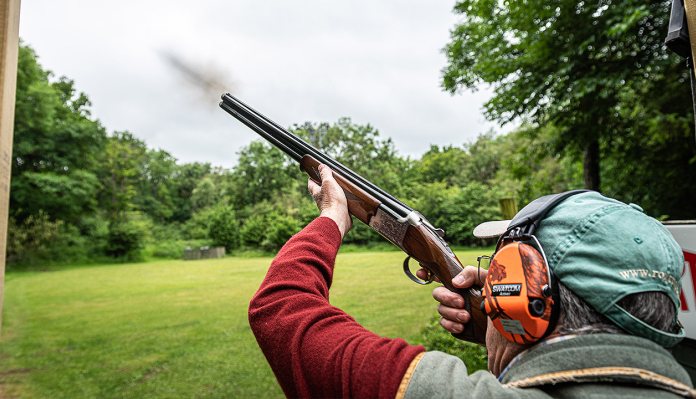Choosing Shooting Ear Protection That You’ll Actually Wear
- Last updated: 07/11/2025

Protecting your hearing sounds simple. Buy something with a high rating, put it on, and you’re set. In reality, most shooters don’t get anything close to the protection printed on the box. Glasses break the seal. You shoulder a shotgun and the cup lifts. Or you go indoors and everything gets twice as loud as you expected. The point of this guide is to help you pick shooting ear protection you’ll actually wear, and wear correctly, whether you shoot in a concrete bay, a windy field, or a muddy clay ground.
If your protection doesn’t seal, it doesn’t protect. That’s the rule that matters most.
For shooting ear muffs:
For shooting ear plugs:
Both have a place. Here’s how most experienced shooters use them.
A lot of regulars end up with both. Electronic muffs for day-to-day, and a set of foam plugs in the pocket for when someone pulls out a big brake at the next bench.
Indoors. Concrete walls, low ceilings, and narrow bays reflect sound. Everything feels harsher and more fatiguing. Many shooters go straight to doubling up here: foam plugs plus shooting ear muffs, ideally electronic so you can still hear commands. If you’re teaching or taking a class, electronic muffs over plugs are the sweet spot, since you can keep up with instructions without lifting anything off your ears.
Outdoors. You get airflow and less reflection, which helps, but impulse noise is still high. Electronic options shine here because you can hear trap calls, partner cues, wind, and wildlife while staying protected. For rifles, watch cup interference with your stock and cheek weld. Low-profile cups solve a lot of headaches.

If your ears get hot, pinched, or sore, it’s tempting to readjust by lifting and moving hearing protection. That’s when damage happens.
For plugs, comfort is about size and texture. If foam irritates your ears, look at filtered plugs with smooth finishes, or go custom.
The basic rule: go for two layers when any one of these is true.
Use foam plugs under electronic shooting ear muffs. You’ll still hear voices through the mics, but you get a bigger safety margin for the loudest impulses and reflections.
Electronic units that use stereo microphones help you tell where sound is coming from. That matters more than people expect. Directionality makes it easier to track range commands, listen to the RO, or coordinate in a squad.
If you do practical shooting or team drills, this is a big quality-of-life feature. Some models accept external comms or integrate with push-to-talk systems. Even if you never plug that in, the mic quality and the way voices sound through the cups is worth testing.
Shotgunners often fight the muff-stock clash. Here’s a quick checklist.
For rifles, remember glasses plus cheek weld can pull a cup off on the right side for right-handers. Gel cushions help. So does moving to slightly thinner temple arms on your glasses.
Smaller heads need smaller gear. Adult shooting ear muffs may “look” fine but leak around the jaw. Youth-sized muffs clamp better and actually seal. With kids, comfort is everything. Gel cushions and lighter weight go a long way. If you want them to keep the protection on, let them choose the color and make it part of their kit, not an afterthought.
Sweat, dust, and sunscreen break down cushions over time. Replace cushions and foam liners periodically. For electronic units, keep a spare set of batteries or a charged pack in your range bag. Wipe mics and ports gently, and air things out after wet sessions. If your muffs live in a hot car, expect the pads to harden sooner than they should.
You don’t need a lab to catch leaks. Put your protection on properly, then lightly rub your fingers together near one ear, then the other. With muffs, you should hear that through the mics on electronic models, but not in a harsh or amplified way.
If you lift a cup and the world suddenly gets louder, your seal was doing its job. If lifting the cup doesn’t change much, your seal probably wasn’t great in the first place. Re-seat, adjust your glasses, and try again.
The right setup is the one you can forget about while you shoot. For some that’s filtered plugs they barely notice. For others it’s electronic shooting ear muffs with gel cushions that feel like pillows.
You may end up using both, depending on where you are that day. That’s normal. The key is to be honest about your environments, test the fit you actually use, and choose shooting ear protection that makes you more confident, not less.